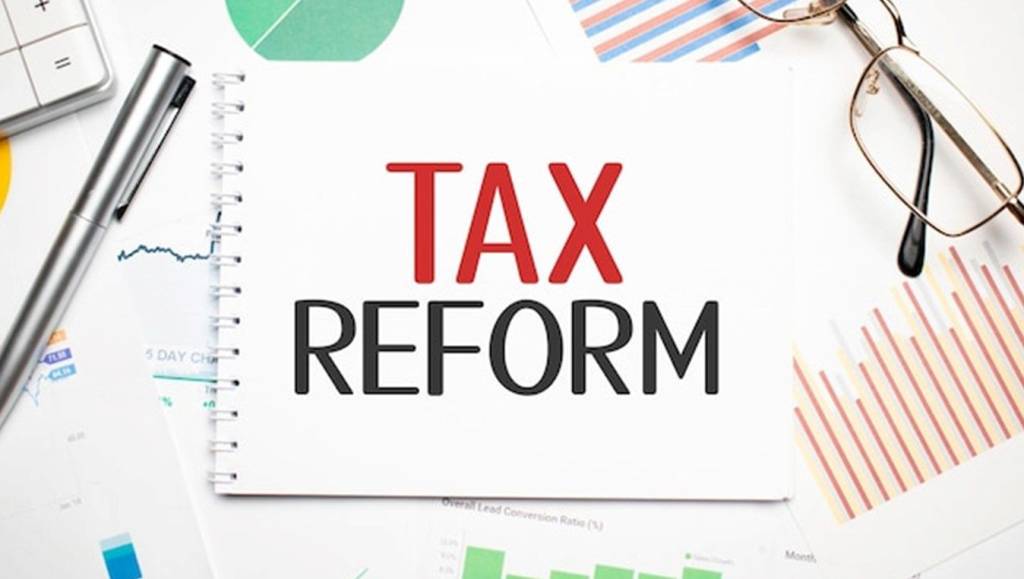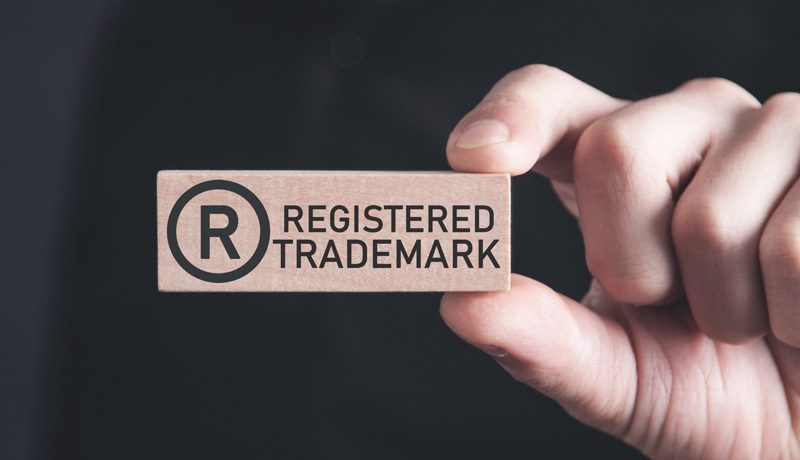As the Coronavirus pandemic hits hard on public health and businesses, the French word, “force majeure” has suddenly become very popular. With looming contract defaults and a liquidity crisis occasioned by the pandemic, many businesses and individuals are being forced to re-examine their contracts and are desperately looking to find a legal basis to avoid or suspend performance of their contracts without legal liability or significant contractual consequences.
Whereas the term force majeure appears as-is in many commercial contracts, such as service contracts, supply or distribution contracts, production contracts etc., this term rarely appears in loan or credit agreements. Instead, facility agreements feature concepts, such as Material Adverse Effect, Material Adverse Change, Disruption Event, Market Disruption, etc.
This article thus considers the effects of the COVID-19 pandemic on financing arrangements in Nigeria vis-à-vis the standard provisions of the Loan Market Association model form-based facility agreements by examining: (a) the key legal considerations for borrowers and lenders as a result of the pandemic; (b) short and long term solutions that may be adopted by parties to a financing arrangement; and (c) the palliative measures put in place by the Federal Government of Nigeria, through the Central Bank of Nigeria, to cushion the harsh effects of COVID-19 on the banking sector and its stakeholders.

1. INTRODUCTION
With nearly every sector experiencing commercial disruption as a result of the COVID-19 pandemic, and given the uncertainty as to how long the said disruption will last, questions from borrowers and lenders continue to arise as to whether the pandemic can excuse or suspend the performance of their respective contractual obligations under various finance documents. However, the effects of COVID-19 and the resulting disruption it has had on global markets pose a unique challenge to financing arrangements, due to the relative inapplicability of the legal doctrines of force majeure and frustration under finance documents. In this regard and for the purpose of this article, our discussion and analysis are primarily based on the standard provisions contained in the Loan Market Association model form-based facility agreements (the “LMA Facility Agreement”), as well as possible variants of these provisions following negotiations amongst parties.
During this period, parties to financing arrangements will have to closely review and analyse specific provisions of their finance documents, including representations and warranties, financial covenants, events of default, and restrictions with respect to change of business, amongst others, in order to determine the extent to which the pandemic has impacted their subsisting financing arrangements. Following such review, parties may then be able to identify the potential short-term or long-term solutions to the difficulties they currently face in meeting their contractual obligations. In addition to the contractual analysis, parties will also need to understand the impact that the various intervention schemes by governmental authorities may have on the terms contained in their respective finance documents.
2. FORCE MAJEURE, FRUSTRATION AND RELATED CONCEPTS

It is important to note that force majeure clauses, which usually entitle a party to suspend performance of its obligations under a contract (or claim for extension of time to perform such obligations) following the occurrence of specified events beyond that party’s control, are not usually contained in LMA Facility Agreements. Mindful that the concept of force majeure is only applicable to contracts where such a provision is expressly stated (and would generally not be implied into a contract), the doctrine of force majeure will not apply to financing arrangements entered into pursuant to a standard LMA Facility Agreement. Indeed, commercial contracts where force majeure clauses are included typically restrict the applicability of the doctrine to performance of non-financial obligations; and a party would generally not be able to rely on the force majeure doctrine to suspend or avoid performance of a financial obligation or avoid performance of an obligation on the ground that it has become more expensive to undertake in the circumstances. Accordingly, even where financing agreements include force majeure provisions, it is unlikely that a borrower will be able to rely on same to avoid or suspend debt service obligations.
Where there are no express force majeure provisions in a contract, parties may be able to invoke the common law doctrine of frustration. The doctrine of frustration will apply if it becomes physically or commercially impossible to fulfil a contract due to the occurrence of certain unforeseen circumstances, or such circumstances render the performance of contractual obligations radically different from that which was contemplated by the parties at the time of execution of the contract. The doctrine of frustration results in the contract automatically coming to an end, and the parties to the contract will generally no longer be bound to perform their future obligations. In determining whether or not a contract has been frustrated, the appropriate test is whether or not there has been, without default of either party, a radical change in the obligations imposed by the contract. It is not sufficient to establish that there is additional hardship in performing the contract. For frustration to occur, the radical change must have been so fundamental that it strikes at the root of the agreement, and is entirely beyond what either party could have contemplated when they entered into the contract.

In view of the drastic consequences of contractual frustration, the threshold for proving same is much higher than that for most force majeure provisions. For instance, frustration as a remedy may not be available, if there is an alternative way to perform the contract, or simply because the contract has become more expensive to perform or because there are changes in economic conditions. Thus, considering the nature of the obligations under facility agreements, it is doubtful that a borrower will be able to successfully invoke the doctrine of frustration to avoid its debt service obligations under its financing agreement; however, the determination will be dependent on the facts and circumstances of each case.
Although, concepts such as Market Disruption and Disruption Event are contained in the LMA Facility Agreement, they are not force majeure clauses and therefore do not avail the sort of remedies that force majeure or frustration would provide. Market Disruption provisions are applied, in the determination of interest rates in a syndicated financing where reference banks have not supplied rates to the facility agent for the purpose of determining the applicable interest rate or where the cost of funds to the lender(s) is in excess of a specified benchmark – i.e. LIBOR.
On the other hand, a Disruption Event is typically
defined in the LMA Facility Agreement as:
a. A material disruption to those payment or communications systems or to those
financial markets which are, in each case, required to operate in order for payment obligations to be met or for
certain transactions contemplated under the finance documents be carried out; and/or
b. An event which results in a disruption (of technical or systems-related nature) to the treasury or payments operations of a party preventing that, or any other party from performing its payment obligations or from communicating with other parties, in accordance with the terms of the finance documents, and in each case, not caused by and beyond the control of the relevant party.
Accordingly, for a borrower, the term, Disruption Event purports to give a short grace period (so as to avoid an Event of Default (“EoD”)) where the borrower is unable to pay on the due date as a result of certain technical or systems-related problems in effecting payments or making communications. For a lender, the term, Disruption Event purports to give a short grace period in relation to fulfilment of its funding obligations (so as to avoid becoming a Defaulting Lender) where the lender is unable to fund on the due date as a result of a technical or systems-related problem. Thus, Disruption Event only offers short respite to a party where (technical or systems-related problems (and not financial difficulties) occasioned by the realities of the COVID-19 situation causes such party to be unable to meet its payment/funding obligation under the finance documents on time.
3. LEGAL CONSIDERATIONS FOR BORROWERS AND LENDERS

Many businesses have been forced to close temporarily due to either government restrictions or a reduced commercial demand for their products or services. As a result, reduced liquidity and cash flow are therefore likely to be a major concern for a number of borrowers, as well as their ability to comply with a number of covenants and duties under their financial arrangements; including debt service obligations, financial covenants, and maintaining the original nature/objects of their businesses. On the other hand, the primary issue for lenders in the midst of the pandemic appears to be balancing their contractual commitments in relation to funding obligations vis-à-vis the need to manage increased credit risk. As much as lenders would like to identify with borrowers who have erstwhile been faithful in debt service, at this time, lenders are also burdened with loans that could go from performing to non-performing or even distressed loans; and the resulting impact on their regulatory capital and profitability could be very negative. As such, borrowers and lenders would have to assess how their financial and business positions as a result of the pandemic affect their rights and obligations under the provisions of the facility agreement.
We examine below key provisions of the LMA Facility Agreement that may be impacted by the COVID-19 pandemic:
a. Conditions of Utilisation: Utilising Undrawn Commitments/Accessing Accordion Facilities
In order to mitigate or bridge liquidity and cash flow issues, companies may want to utilise any undrawn commitments or accordion facilities under their existing financing arrangements. However, a borrower may be unable to utilise the undrawn
commitments or accordion facilities as a result of the occurrence of a drawstop occasioned by the pandemic. Drawstops are events, (such as breaches of warranties), that give the lender the right to refuse to make further loan advances under a facility agreement. In this regard, a facility agreement may include provisions requiring the borrower to fulfil certain further conditions precedent before it can access additional funding under the relevant facility, including confirmation that: (i) no EoD or a potential EoD has occurred and is continuing; and (ii) the repeating representations are true in all material
respects, in each case, as at the date of the utilisation request and the proposed utilisation date.
The implication of this is that a borrower who wishes to utilise such available commitment or accordion facility will have to ascertain whether there are any subsisting defaults or potential defaults and that no repeating representation has become untrue as a result of the pandemic. Whilst further details on the impact of repeating representations and EoDs are considered below, suffice it to say here that where the borrower is unable to make these confirmations, this may constitute a drawstop and the relevant lender will not be obliged to make available the requisite funding.
That said, the parties also need to consider the provisions of the agreement on the specified times for the delivery of utilisation/drawdown requests vis-à-vis the proposed utilisation date. The LMA Facility Agreement will typically make reference to “Business Days”; and parties would need to consider how the calculation of the specified time has been or will be impacted by the various lock-down orders1 and any unforeseen public holidays that may be occasioned by the pandemic.
b. Repeating Representations
Repeating representations are representations and warranties under the facility agreement which are deemed repeated by the borrower at certain times during the life of the facility, usually on (i) the first day of each interest period; (ii) each interest payment date; or (iii) sometimes, each day until the facility is fully repaid. Repeating representations will often
include a representation on the legal status of the borrower, its capacity and authority, its solvency, the non-occurrence and subsistence of defaults, ranking of indebtedness and security, amongst others. Borrowers must thus ascertain whether, in light of the impact of the pandemic on their businesses, they are able to repeat the repeating representations under their financing arrangements.
Chief amongst the standard repeating representations that are likely to be impacted by the pandemic is the representation on the solvency of the borrower and non-occurrence and subsistence of a default. Some facility agreements also include as a repeating representation that “since the date the most recent financial statements were delivered, there has been no material adverse change in assets, business or financial conditions of the company”. Accordingly, a borrower has to review its activities and state of affairs to ascertain whether any of the events classified to constitute an insolvency proceeding or creditors’ process under the facility agreement has occurred to it; or if any default has occurred under the facility agreement or under any other agreement or instrument which is binding on it or its assets; or if there has been a material adverse change in its assets, business or financial condition, as a result of the economic effects of the pandemic. A misrepresentation, after the expiration of any relevant grace period (if any), would usually constitute an EoD under the LMA Facility Agreement.

c. Material Adverse Effect/Material Adverse Change
The term Material Adverse Effect (“MAE”) describes a materiality threshold that is used to measure the adverse effects of an event. The scope of the definition typically depends on the type of transaction and the negotiating power amongst the parties. In the LMA Facility Agreement, MAE is typically defined as an event which has a material adverse effect on: (a) the business, financial condition or assets of the borrower or its group; (b) the ability of the borrower to perform its obligations under the finance documents; (c) the validity or enforceability of, or the effectiveness or ranking of any security granted
pursuant to any finance documents or the rights or remedies of any finance party under any finance documents. As a measure for materiality, the MAE term is sometimes used to qualify representations and warranties. Hence, for example, a representation and warranty on breach of law can be qualified as follows “the borrower has not breached any law or regulation which breach has or might reasonably be expected to have a Material Adverse Effect”.
Related to MAE and often used interchangeably, Material Adverse Change (“MAC”) provisions would usually refer to a materially adverse effect or change in the assets, business or financial conditions of the company as a whole. As with MAE, and depending on the type of transaction, the scope of a MAC clause is often the subject of detailed negotiation. Some
facility agreements require that the borrower repeats a representation that a MAC has not occurred in relation to it from the date of the most recent financial statement delivered to the lender, whilst some may make the occurrence of a MAC a drawstop event and/or an EoD. The usual EoD provision in relation to MAC under the LMA Facility Agreement is “any event or circumstance occurs which the Lender/the Majority Lenders reasonably believe(s) has or is reasonably likely to have a Material Adverse Effect”.
In the wake of the COVID-19 pandemic, lenders are keenly considering whether the pandemic may have affected or has the potential of affecting the financial health of their borrowers vis-à-vis their ability to maintain their business and meet their debt service obligations. In any event, whether an MAE or MAC has been triggered will depend on an assessment of the impact or potential impact of the crisis and the wording of the MAE/MAC provision.
In relation to MAC clauses, the English High Court in Grupo Hotelero Urvasco S.A. v Carey Value Added S.L2, set out the following principles:
1. Borrower’s Financial Condition - Where a material adverse effect clause refers only to the financial condition of the borrower, this financial condition is determined by assessing the borrower’s financial statement at the relevant date, and would not include other matters such as the prospects of the company or external economic or market changes. However, the court stated that the enquiry is not necessarily limited to the financial information if there is other compelling evidence to show a material adverse change.3

2. Pre-Existing Circumstances - If the lender is aware of an event or the state of affairs at the time of entry into the loan documents, or is aware of an event that is likely to occur at the time of entry into the loan agreement, then such an event cannot be relied on for the purposes of a material adverse effect clause.4 However, it will be possible to invoke the clause where conditions worsen in a way that makes them materially
different in nature.5
3. Duration of the Adverse Circumstances - In order to be material, any change must not merely be temporary. If the effect of an event on the borrower is short-term, the lender will not be able to rely on a material adverse effect/change clause. This is because short term changes are unlikely to cause a significant impact on the borrower's ability to repay the lender.6
Whilst traditionally, lenders are usually reluctant to call an EoD and accelerate repayment of loans on the basis of a MAC/MAE alone, lenders may use this as a basis to refuse to fund further utilisation under the facility, that is, trigger a drawstop. However, the extent to which a MAC/MAE clause can be activated at this time will depend on the actual language used in the relevant facility agreement.
d. Financial Covenants
Financial covenants will need to be monitored closely by the borrower and lender to determine how the pandemic has affected the borrower’s ability to comply with its financial ratios. Mindful that financial covenants are often backward looking, the full effect of the pandemic may not yet be apparent at this stage. However, the longer the pandemic persists, the greater the chance that borrowers may become susceptible to breaching these covenants, if they are not already in breach. Many facility agreements use the metric of earnings before interest, taxes, depreciation and amortization (“EBITDA”) over the last four fiscal quarter periods, to measure a company’s overall financial performance in testing for compliance with financial covenants. Accordingly, parties to facility agreements will need to analyse the impact of any expected decrease in EBITDA, and whether any changes are required to the defined concepts used to calculate financial covenants.
Some facility agreements may provide that a breach or potential breach of financial covenants will trigger equity cure requirements, whereby sponsors may be required to deposit additional equity into the borrower, for the purpose of improving the relevant ratios and curing the relevant breach. Accordingly, during this period, borrowers and their sponsors would need to pay attention, to the financial covenants under the facility agreement to ascertain if there is any impending equity cure trigger.
e. Undertaking on Change to Business and Amendment of Material Contracts
Due to the movement restrictions placed by government authorities, supply chain interruptions and decreases in demand occasioned by the pandemic, many companies may consider adapting or changing their businesses in order to remain a
going concern. Some borrowers may also consider revising their material contracts to suit the realities and demands of the situation. In this regard, borrowers need to review the provisions of their facility agreement and ascertain whether there are any consent or notification requirements to be satisfied prior to undertaking such change in business or alteration of material contracts. The LMA Facility Agreement may require that lender(s’) consent be obtained prior to any changes to a borrower’s business or any (material) amendments to material contracts.
f. Events of Default
The occurrence of an event of default, gives a lender the right to accelerate the loan, demand immediate repayment, and take steps to enforce any security backing the facility. The key EoDs that are likely to be triggered in the wake of this pandemic are:
. Non-Payment
. Financial Covenants
. Cross-Default
. Misrepresentation
. Insolvency
. Insolvency Proceedings
. Cessation of Business
. Material Adverse Change
We have discussed above the likely impact that COVID-19 may have in triggering most of these key EoDs. As such, borrowers should closely review the EoD provisions in their facility agreements and begin to engage their respective lenders with a view to structuring a mutually beneficial remedy to any of these EoDs.
g. Notification of Default and other Information Undertakings

At this time, borrowers must examine the information undertakings set out in their facility agreement. Where the facility agreement requires that the borrower notifies the Lender of a default (i.e. a potential EoD), the borrower must do so in order to avoid triggering an EoD.
h. Defaulting Lender Provision
In light of the looming liquidity crisis occasioned by COVID-19, it is envisaged that more companies will make efforts to enhance their liquidity by drawing on their revolving credit facilities or any undrawn available commitment thereby increasing the pressure on lenders. If the pandemic persists for an extended period, borrowers may begin to consider their cause of action in the event that any lender does not fund a requested utilisation. In the event that a borrower has met all of its obligations to utilise its facility, but a lender fails to provide its portion of the commitment, the borrower can sue the defaulting lender for breach of contract. In this regard, the Defaulting Lender provisions in the LMA Facility Agreement offer some immediate remedies for borrowers in such situation, including: (i) the right to replace such defaulting lender with another lender selected by the borrower and (ii) termination of the commitment of such lender. The extent to which these provisions provide succour to the borrower in the circumstance will have to be further considered mindful that most lending institutions may be unwilling or unable to lend at such time.
4. SHORT-TERM AND LONG-TERM SOLUTIONS

Following a careful contractual review and legal analysis, it is imperative that lenders and borrowers communicate with one another with a view to mapping out short-term and/or long-term solutions to address the pressing liquidity issues in order to maintain access to available commitments, meet contractual obligations and avoid the occurrence of an event of default. In this regard, borrowers will have to leverage on their existing relationships with lenders and the need to establish an effective line of communication cannot be over-emphasised.
In advising lenders of defaults or potential defaults, it is imperative that the borrower fairly presents the situation and its impact on the lender, and the steps being taken to address them. Needless to say that borrowers and lenders would need to work together as partners in getting through the tides of these unusual times. Lenders may consider working with erstwhile good borrowers on preparing and/or overhauling their business plans vis-à-vis their respective financing obligations to better match the current realities and achieve optimal business performance. In this regard, there should be particular focus on projections and liquidity forecasts which take into consideration the approaches and timelines being communicated by: (i) government authorities for gradually easing the lockdowns and (ii) the medical community on how soon a vaccine will be available.
We examine below a few practical solutions that may be explored by the parties in resolving any issues that may have arisen as a result of the pandemic crisis:
a. Utilising Undrawn Commitments and Accessing Accordion Facilities
To shore up its liquidity needs, a borrower may consider utilising any undrawn commitment under its existing facilities or accessing accordion facilities already contemplated under its existing facility agreement. Access to such funding may
ultimately be in the lender’s interest, as liquidity will positively impact business operations and recovery, thereby improving the lender’s chances of full debt recovery. However, parties must be mindful of the terms and conditions on which such
accordion facilities can be made available under the facility agreement, that is whether such increase in commitment, in a
syndicated facility, requires all lenders or majority lenders consent, as this could impact on the time in which such facility can be made available.
b. Consents, Amendments and Waivers
As indicated in paragraph 3(a) above, the ability to access additional funding under an existing facility arrangement may be impaired by the fact that certain EoDs or potential EoDs are subsisting and/or certain repeating representations are no longer true in light of the COVID-19 crisis. In order to address this, borrowers may request and the lenders may consider granting waivers in relation to the fulfilment of such further conditions precedent on such terms and conditions as the lenders may deem fit. Other contractual obligations which may not be met by the borrower due to the crisis may also be dealt with, in the interim, through amendment and waiver letters. The borrower should also request the lender’s consent for such activities it wishes to undertake for business recovery where such consent is required.
c. Deferral of Interest or Scheduled Amortization Payments
Borrowers and lenders may also agree that interests and/or amortization payments that are otherwise due and payable be deferred till a later date in exchange for the provision of additional credit enhancement and/or stiffer undertaking, covenants, and reporting obligations.
d. Renegotiating Financial Covenants
In light of the COVID-19 crisis, most companies are experiencing or expect to experience a material drop in revenues thereby impairing their ability to meet specified financial ratios under their respective financing arrangements.
Accordingly, borrowers may approach lenders to amend the financial covenants in the facility agreement or the basis of the
calculation of same, putting into consideration current realities and business/revenue projections. Such respite may be granted by the lenders as a short term solution via amendment letters or such term(s) may be included in the
documentation for a restructured facility.
e. Long term Solutions: Facility Restructuring and Refinancing
Parties may also consider undertaking a full restructuring of the facility and entering into restructured facility documentation which captures all necessary headroom, requirements, amendments, waivers and/or consents required by the borrower to survive the current economic realities. Such restructured facility documentation may include stiffer covenant packages and reporting obligations as well as credit enhancements. A borrower may also explore the possibility of refinancing of the facility on better terms and conditions suitable to its commercial needs and objectives. It is however possible that such new facility may be granted at a higher pricing.
f. Evaluate Enforcement Options
Notwithstanding the foregoing, a lender may also begin to evaluate its enforcement options and strategy if it deems that any of its financing agreements give rise to an issue that is unlikely to be remedied. In this regard, a lender should consider the nature of the enforcement options and the associated process vis-à-vis the impact of the various lockdown orders.
It should be noted that the adoption of any of the foregoing options may pose certain practical closing/completion challenges in light of the prevalent lockdown orders. For instance, the execution of restructuring or financing documents may pose some practical challenges; parties will thus need to provide for alternative execution procedures and/or waivers/deferral of certain signing formalities and notice requirements in their facility agreements. Whilst certain documents may be executed using electronic signatures, some finance documents which are required to be filed at certain registries will require wet-ink signatures. For instance, the Corporate Affairs Commission (“CAC”) as well as most land registries across different states in Nigeria require wet ink originals of security documents for the purpose of registration or filing.
Another issue is undertaking certain perfection requirements, such as stamping of finance documents and security registration (where applicable) mindful that most government offices, including the CAC and the stamp duties office, are currently not open for business in light of the lock-down order. Whilst such perfection requirements are usually required as conditions subsequent to closing, parties may need to consider agreeing to extended/longer timelines for the fulfilment of such conditions subsequent. Also, consideration needs to be given to determining when the statutory timelines for undertaking the relevant perfection requirement will begin to run; for instance, instruments (including electronic instruments) are required to be stamped within thirty (30) to forty (40) days of their execution or if executed abroad, of being received in Nigeria, to render them enforceable in Nigeria. Registrable security under the Companies and Allied Matters Act7 (CAMA) are required to be registered at the CAC within ninety (90) days of their creation to ensure their validity. Depending on how long this pandemic subsists, the registries and stamp duties offices will be inundated with numerous submissions for stamping, registration and filing applications and there could therefore be delays.
5. CREDIT SUPPORT FROM GOVERNMENT INTERVENTION

Palliative measures have been put in place by different levels of government in Nigeria to alleviate the impact of the pandemic on businesses, households and critical sectors of the economy. Particularly and in relation to the banking and finance sector, the Federal Government of Nigeria, through the Central Bank of Nigeria (the “CBN”), have established different credit schemes to cushion the effect of this scourge. In this regard, the CBN issued a circular, dated March 16, 20208, containing certain policy measures specifically initiated to provide support to households, businesses and financial
institutions as a result of the pandemic. These policy measures include the creation of a N50Billion Targeted Credit Facility, creation of a N100Billion intervention facility as credit support for the healthcare industry, reduction in the applicable
interest rates on all CBN intervention facilities, extension of moratorium for all CBN intervention facilities, and regulatory forbearance through grant of leave to Deposit Money Banks (DMBs) to extend the tenors of credit facilities granted to businesses and households affected by the pandemic. A detailed analysis of the credit schemes and other measures introduced by the CBN and the Federal Government of Nigeria can be accessed in our recently published article, “Policy and Regulatory Measures Against the Coronavirus Pandemic in Nigeria”.
Hence, borrowers may leverage on the credit schemes established by the CBN as a source of liquidity for their business operations during these times. It is also important for borrowers to examine the different intervention measures by the government authorities vis-à-vis how these may impact the provisions of their existing financing arrangements. For instance, consideration needs to be given to whether a declaration of moratorium on indebtedness by government authorities may trigger an EoD under the LMA Facility Agreement, as the events described under the insolvency EoD in the LMA Facility Agreement usually include when “a moratorium is declared in respect of any indebtedness of the borrower”. Indeed, borrowers who are beneficiaries of cross-border financings need to pay attention to government activities in their lenders’ jurisdiction vi-a-vis how such activities may impact their financing arrangements.
6. CONCLUSION
Given the relative inapplicability of the mitigating legal doctrines of force majeure and frustration to the provisions in a standard LMA Facility Agreement, borrowers who are currently facing financial hardship as a result of the pandemic are advised to review their underlying facility agreements, paying close attention to clauses covering representation and
warranties, material adverse effect, events of default, financial covenants, amongst other critical provisions. This should be done with a view to identifying any default which has occurred or is likely to occur, and working closely with the lenders to obtain necessary accommodations and forbearance to take it through the economic effect of the pandemic. This may
involve seeking short term amendment and waivers, requesting utilisation of undrawn commitments or accordion facilities or exploring the different palliative initiatives of the government and their agencies, restructuring of the facilities or even a refinancing.
Lenders may consider working with borrowers on preparing and/or overhauling their business plans to better match the current realities; and such advisory services may be provided by the banks without charging advisory fees, as a form of relief to cushion the economic effects of this crisis. We are however mindful that the banks must have some comfort that their regulatory capital requirements and other obligations are not jeopardised by the grants of these concessions. As such, in order to incentivise and encourage banks to extend relevant concessions and waivers to deserving borrowers during this pandemic, the CBN may consider granting waivers or extensions/grace periods in meeting any regulatory capital or other thresholds to banks who grant these reliefs to their borrowers.
Indeed, we are beginning to see some commercial banks in Nigeria offer certain concessions to various categories of borrowers affected by the economic effects of the pandemic, including moratoria and grace periods. Banks have also begun to receive from borrowers, restructuring requests in relation to some of their facilities citing the economic effects of the pandemic, and these requests are being given due consideration by the banks.
1. On March 30, 2020, the Nigerian President, Muhammadu Buhari issued a lockdown order directing the closure of all businesses (except for essential services providers) and the cessation of all movement in Lagos State, Ogun State and the Federal Capital Territory for an initial 14 days, commencing on March 30, 2020 at 23:00. The lockdown order has now been extended for a further period of 14days. Different state governments have also issued similar lockdown orders applicable in their respective states to curb the continued spread of COVID-19.
2. [2013] EWHC 1039 (Comm).
3. Ibid. at para. 364.
4. Ibid at para 358.
5. Ibid at para 362.
6. Ibid at para 363.
7. Cap C.20 Laws of the Federation of Nigeria 1990
8. Ref. FPR/DIR/GEN/CIR/07/049
The Grey Matter Concept is an initiative of the law firm, Banwo & Ighodalo
DISCLAIMER: This article is only intended to provide general information on the subject matter and does not by itself create a client/attorney relationship between readers and our Law Firm or serve as legal advice. We are available to provide specialist legal advice on the readers’ specific circumstances when they arise.













